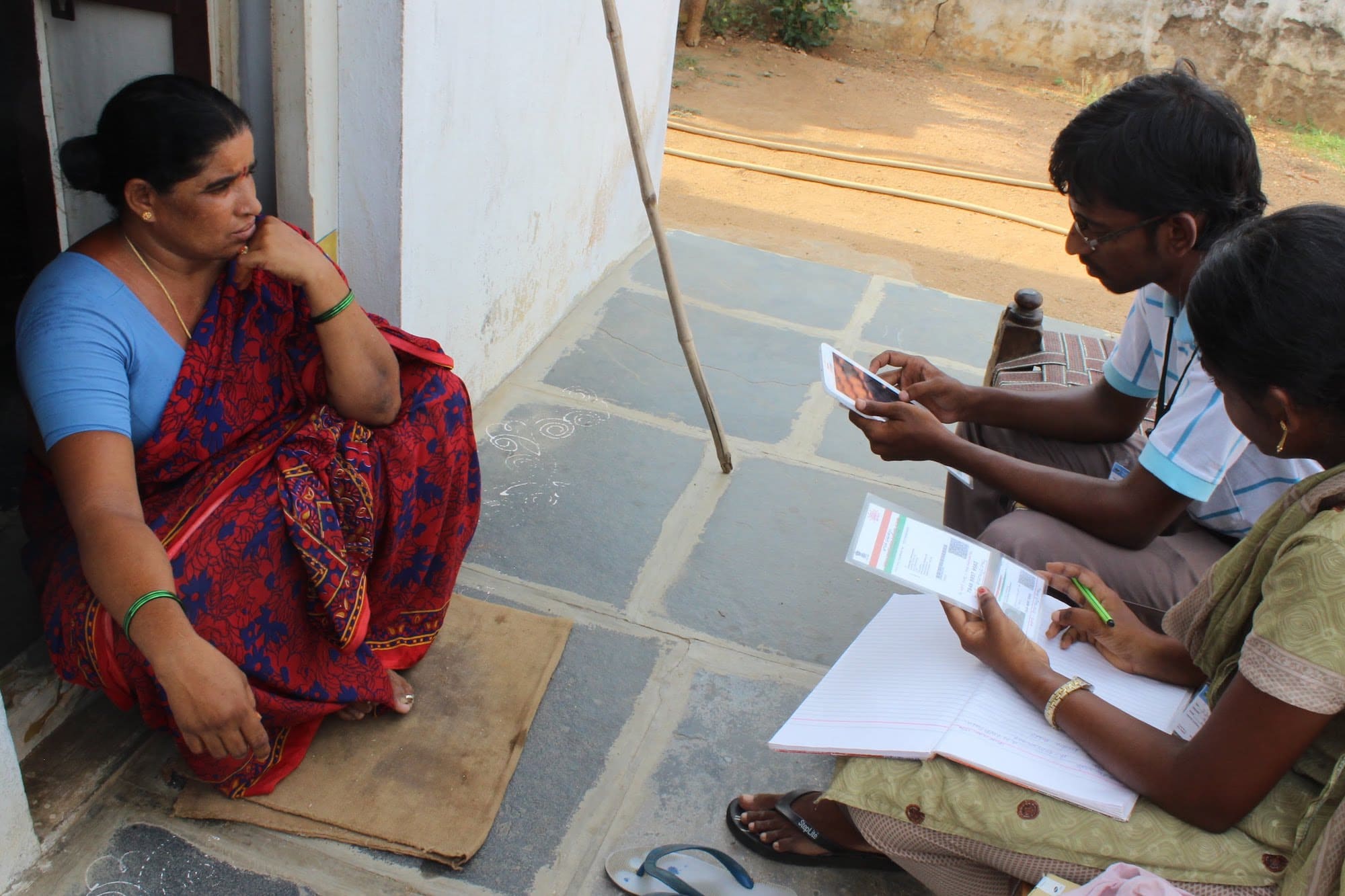Non-cooperation by the people, a lengthy, time-consuming questionnaire are among the issues that have made enumerators doubt of they could meet the target.
Published Nov 14, 2024 | 9:00 AM ⚊ Updated Nov 14, 2024 | 9:00 AM

People are reluctant to share details since they fear losing the benefits under welfare schemes. (Representational photo)
Telangana government employees conducting a caste survey in the state are facing resistance in some villages and towns.
People are sceptical about the survey, which was launched on 6 November without publicity or awareness-raising about the need for the exercise. The survey will continue till the end of the month.
The government has deployed over 87,000 enumerators, including teachers, Mandal Revenue Officers, Mandal Parishad Revenue Officers, Mandal Panchayat Officers, ASHA, and Anganwadi workers. Each enumerator is expected to cover 10 houses a day.
Additionally, enumerators are given forms with 75 questions. The lengthy questionnaire has been discouraging those willing to cooperate with the exercise since they do not have the time to answer all the questions.
The timing of the survey, too, has affected the exercise. The Opposition BRS has been levelling a string of allegations against the government, which has made people question the survey’s intention.
Residents of Dilawarpur and Gudempalli in the Nirmal district refused to provide the necessary data unless the government withdrew its permission to set up an ethanol plant. They have been protesting against the plant for more than five months.
Similarly, in the Mulugu district, the residents confronted the officials asking them why they had not been provided basic amenities. The tribespeople in Ailapur boycotted the survey demanding proper roads, electricity, drinking water, and medical facilities.
They said the government had turned a deaf ear to their problems, repeatedly brought to the notice of the authorities over the past decade.
Though the High Court of Telangana has asked the government to introduce a column “No Religion-No Caste” in the data entry form, in some places the people were not entertaining the enumerators when asked about their caste. Several videos on social media showed residents targeting enumerators for seeking sensitive data like religion, caste, property, and income details.
The problems enumerators face are varied. In some areas, they are not allowed inside homes. Well-to-do families are turning the enumerators away. They are not allowed to put up stickers on the walls of their houses.
In some areas, the ID cards of the enumerators were taken away as the people felt that they were collecting data to make them ineligible for benefits under welfare schemes.
In rural areas, the enumerators, who are mostly teachers, visit houses in the afternoon after school. When they reach the houses, they find them locked since it is the farming season. Enumerators feel that meeting the target of 175 houses each will be difficult as the entire process is painfully time-consuming.
Moreover, they have to first convince the people that the data is not meant for deleting their names from the beneficiary list of welfare schemes.
Even after gaining their confidence, they find it difficult to convince them to provide the data regarding their source of income, and details of their PAN and Aadhaar cards. In some villages, people sought to know what the enumerators would do with information about their financial status.
However, officials said that the caste census is going on smoothly and will be completed ahead of the deadline. Medak District Collector Rahul Raj, after going around Ramayampet on Wednesday, 13 November, said the staff had already completed 33 percent of the work.
He said the district has 1,600 enumerators and 170 supervisors. “I appeal to the people to cooperate with the census staff as the work is intended to ensure the welfare of all the castes, he said.” The municipal commissioner, tehsildar, and Mandal development officer were supervising the work.
BC Welfare Minister Ponnam Prabhakar said divulging information is not mandatory but voluntary. He said the census is meant to ascertain the caste-wise population.
“The people, if those chose, need not give out information about their caste, or religion, or Aadhaar and PAN details,” he told reporters on Wednesday but underscored the need for voluntary disclosure as it would help in planning welfare programmes.
Telangana government has set for itself the ambitious target to complete the caste census in three weeks. It entrusted the work to the planning department as the BC Welfare Department lacked the necessary machinery.
Chief Minister A Revanth Reddy, speaking at the preparatory meeting on the Telangana caste census at Gandhi Bhavan on 30 October, said: “The caste census is like a mega health checkup camp for all castes. The departments concerned have to complete the work by the end of this month.”
The hurry to complete the caste census is due to a high court’s directive in September that the exercise should be carried out within three months and the BC Commission must submit its report to the state government.
But the government remained inactive for a long time and it constituted a five-member BC Commission headed by G Niranjan only on 9 October. The terms and conditions of the Commission include studying the living conditions, the difficulties under which they work, and their occupations.
The commission has to make recommendations to the government for the advancement of BCs and the promotion of their educational and economic interests. The commission, for this purpose, would assess their livelihood based on their traditional occupation, the present status and alternative occupations, if any, and the scope for its modernisation.
The commission would also strive to obtain information from the state and central government departments, agencies, and institutions on the percentage of BC members employed in government, quasi-government, and private sectors.
It is expected to submit a report to the government based on the information collected during the field survey and recommend steps to be taken to remove the impediments to the overall improvement of the socio-economic and educational conditions of all castes.
(Edited by Majnu Babu).
